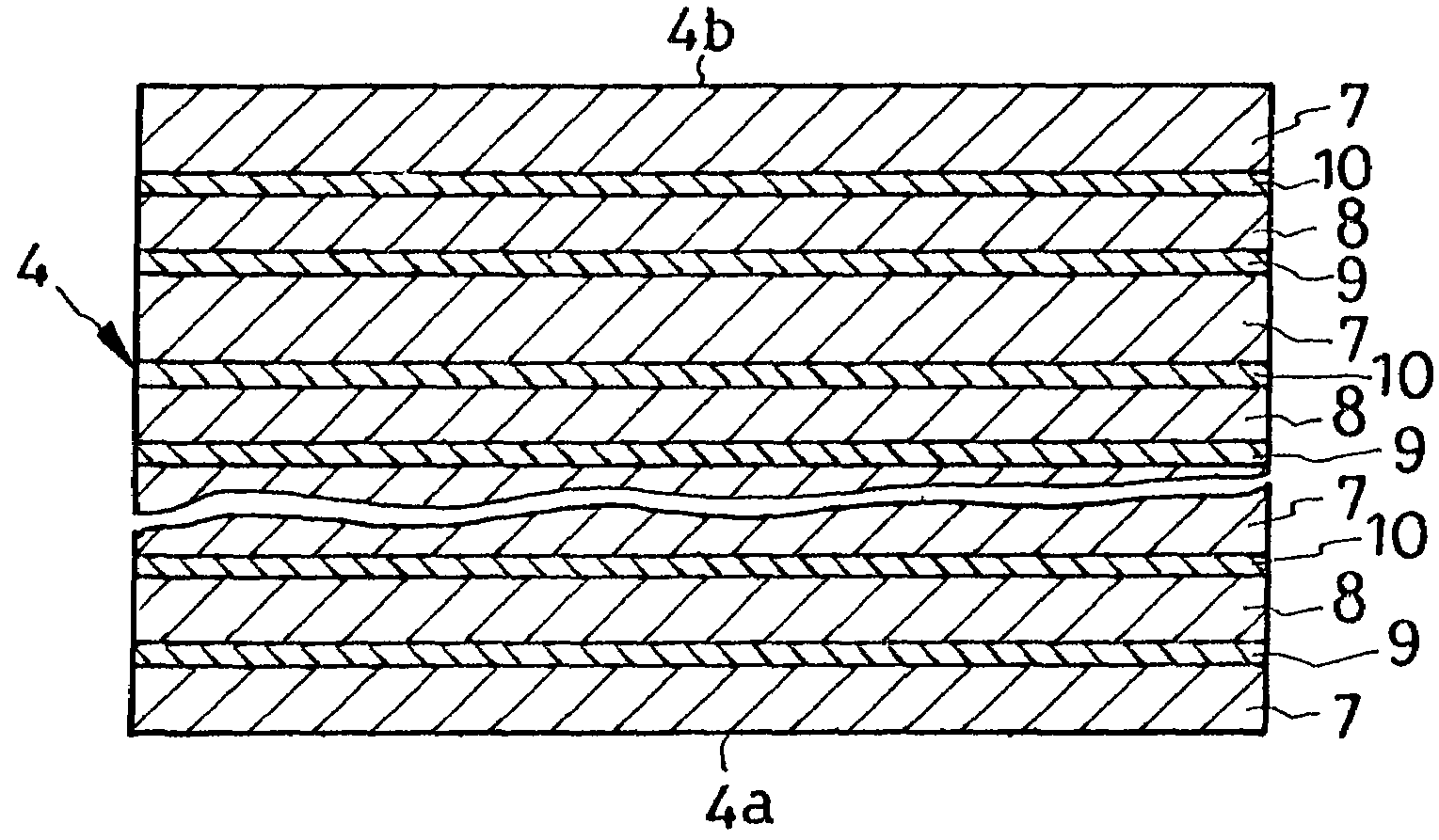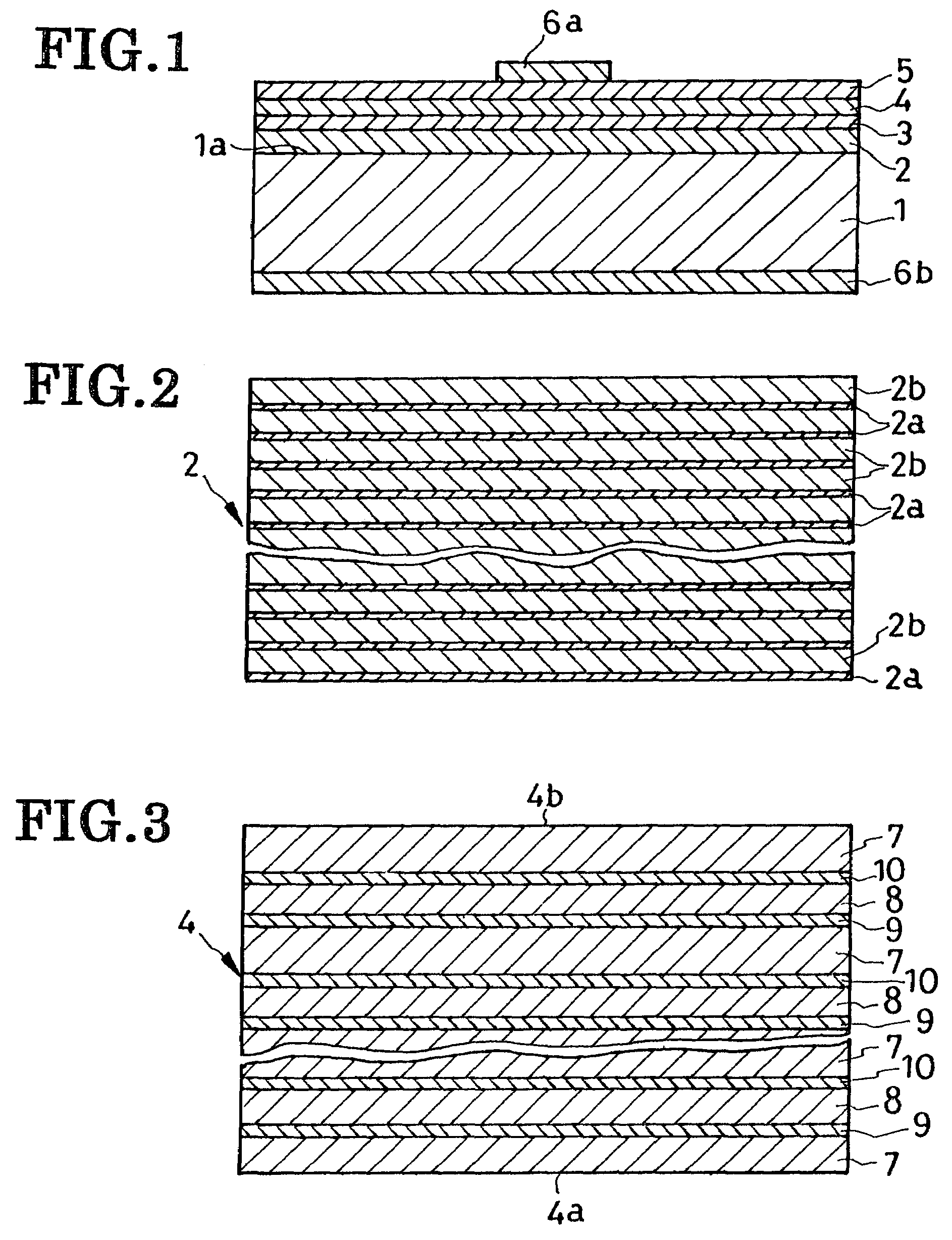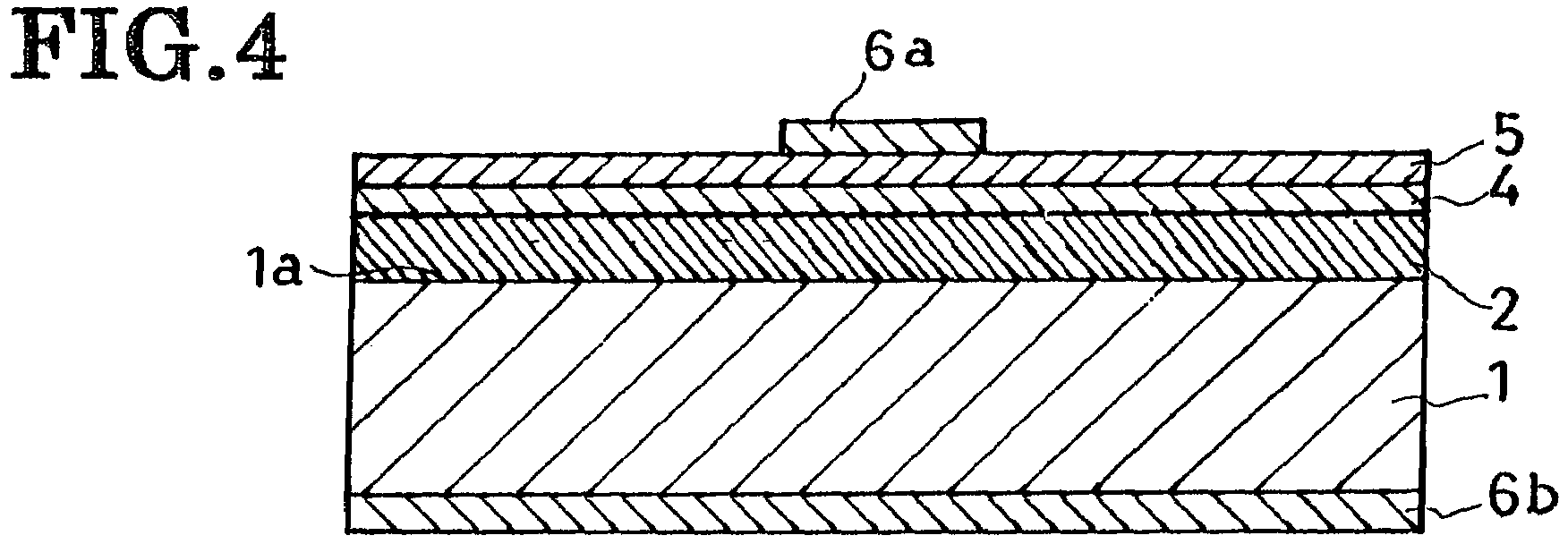Light-emitting semiconductor device having a quantum well active layer, and method of fabrication
a technology of light-emitting semiconductors and active layers, applied in semiconductor/solid-state device manufacturing, semiconductor devices, electrical devices, etc., can solve the problems of mutual diffusion of indium, well-layered deterioration in crystallinity, and difficulty and inconvenience, so as to prevent indium evaporation, reduce the amount of aluminum, and reduce the effect of resistan
- Summary
- Abstract
- Description
- Claims
- Application Information
AI Technical Summary
Benefits of technology
Problems solved by technology
Method used
Image
Examples
Embodiment Construction
[0021]The gallium nitride light-emitting device according to the invention will now be described more specifically in terms of the light-emitting diode (LED) shown in FIG. 1. The method of fabricating this LED will be presented following the detailed explanation of its construction.
[0022]The illustrated LED has a low-resistivity substrate 1 of impurity-doped monocrystalline silicon. Formed on this substrate 1 is, first of all, an n-type buffer layer 2 shown in detail in FIG. 2, to which reference will be had presently. The buffer layer 2 is overlain by three main semiconductor layers 3, 4 and 5, which are arranged one on top of another in that order from the lowermost one upward. The lowermost main semiconductor layer 3 is an n-type cladding or confining layer; the intermediate semiconductor layer 4 is an active layer; and the topmost main semiconductor layer 5 is a p-type cladding or confining layer. The buffer layer 2 might be considered a part of the n-type semiconductor layer. A...
PUM
 Login to View More
Login to View More Abstract
Description
Claims
Application Information
 Login to View More
Login to View More - R&D
- Intellectual Property
- Life Sciences
- Materials
- Tech Scout
- Unparalleled Data Quality
- Higher Quality Content
- 60% Fewer Hallucinations
Browse by: Latest US Patents, China's latest patents, Technical Efficacy Thesaurus, Application Domain, Technology Topic, Popular Technical Reports.
© 2025 PatSnap. All rights reserved.Legal|Privacy policy|Modern Slavery Act Transparency Statement|Sitemap|About US| Contact US: help@patsnap.com



